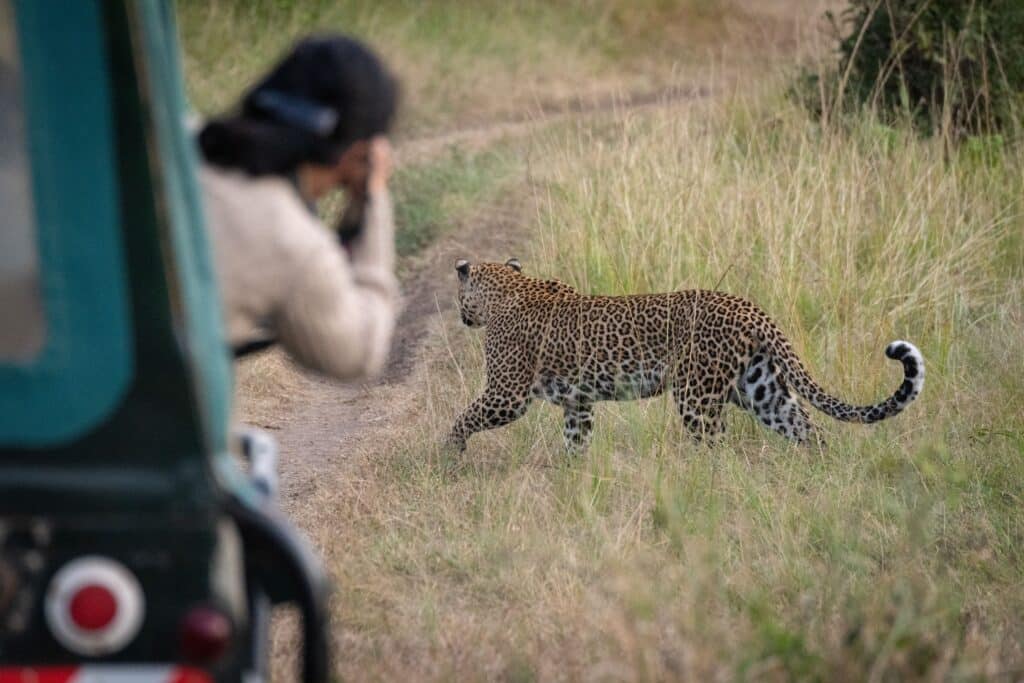When most people think of Kruger Park safaris, their minds immediately jump to the Big 5—lion, leopard, rhino, elephant, and buffalo. But did you know that Kruger National Park is home to some of the rarest and most elusive animals in Africa? Beyond the famous giants, the park teems with lesser-known species that are just as fascinating.
If you’re planning a Kruger Park Safari tour, keep your eyes peeled for these extraordinary creatures. From critically endangered predators to rare antelope and peculiar nocturnal animals, this guide will introduce you to the hidden gems of Kruger National Park animals.
Exciting and extraordinary: Rare animals on Kruger park safaris
African wild dog – The painted wolf
Scientific Name: Lycaon pictus
Conservation Status: Endangered
One of Africa’s most endangered predators, the African wild dog, is a rare but thrilling sight on Kruger Park safaris. Known for their striking patchwork coats and incredible teamwork, these canines are among the most efficient hunters in the bush.
Why they’re special
- Only about 6,600 wild dogs remain in the wild.
- They hunt in packs with a success rate of over 80% (far higher than lions!).
- Unlike other canines, they have only four toes per foot.
Best places to spot them
Northern Kruger, particularly around Pafuri and Shingwedzi, offers the best chances of seeing these elusive hunters.
Aardvark – The nocturnal oddity
Scientific Name: Orycteropus afer
Conservation Status: Least Concern (but rarely seen)
The aardvark is one of the most unusual yet fascinating rare animals in Kruger National Park. This nocturnal, burrowing mammal looks like a mix between a pig, a rabbit, and an anteater—but it’s actually unrelated to any of them!
Why they’re special
- They use powerful claws to dig up termite mounds.
- Their name means “earth pig” in Afrikaans.
- They have a sticky, foot-long tongue to slurp up insects.
Best time to see them
Dusk or dawn during the dry season (May-September) when they venture out to feed.
Pangolin – The armored ghost
Scientific Name: Smutsia temminckii (Ground Pangolin)
Conservation Status: Critically Endangered
The pangolin is the world’s most trafficked mammal, making sightings on a Kruger Park Safari tour incredibly rare. Covered in keratin scales, this shy creature rolls into a ball when threatened.
Why they’re special
- They are the only scaled mammals on Earth.
- A single pangolin can eat up to 70 million ants a year!
- They are highly protected, and poaching remains a severe threat.
Where to find them
Your best chance is on night drives in the southern and central regions of Kruger.
Serval – The elegant stalker
Scientific Name: Leptailurus serval
Conservation Status: Least Concern (but elusive)
With its long legs and striking spotted coat, the serval is one of the most graceful Kruger National Park animals. These medium-sized cats specialise in hunting rodents and birds in tall grass.
Why they’re special
- They can leap over 3 meters (10 feet) to catch prey.
- Their large ears help them detect rodents underground.
- Unlike leopards, they rarely climb trees.
Best viewing spots
Look for them in open grasslands near Satara or Lower Sabie.
Roan antelope – The regal grazer
Scientific Name: Hippotragus equinus
Conservation Status: Near Threatened
One of Africa’s largest and rarest antelopes, the roan, is a majestic sight. With its horse-like face and striking facial markings, this species is highly localised in Kruger.
Why they’re special
- They form small herds led by a dominant male.
- Their name comes from their reddish-brown (“roan”) coat.
- Fewer than 100 individuals remain in Kruger.
Where to find them
The northern plains near Shingwedzi and Punda Maria are your best bet.
Honey badger – The fearless trickster
Scientific Name: Mellivora capensis
Conservation Status: Least Concern (but hard to spot)
Don’t let its small size fool you—the honey badger is one of the toughest rare animals in Kruger National Park. Known for its fearlessness, this creature will take on lions, hyenas, and even venomous snakes!
Why they’re special
- Their skin is thick enough to resist bee stings and porcupine quills.
- They have been known to escape from enclosures by digging or climbing.
- Their intelligence rivals that of primates.
Best time to see them
Early morning or late afternoon in savanna and woodland areas.
Black rhinoceros – The critically endangered giant
Scientific Name: Diceros bicornis
Conservation Status: Critically Endangered
While the white rhino is more commonly seen on Kruger Park safaris, the black rhino is far rarer. Smaller and more aggressive than its cousin, this prehistoric-looking beast is a true icon of African wildlife.
Why they’re special
- They have a prehensile upper lip for grasping leaves.
- Fewer than 5,000 remain in the wild.
- They are solitary and highly territorial.
Best viewing areas
The remote northern sections of Kruger offer the best chances.
Tips for spotting rare animals on Kruger park safaris
Go with an Expert Guide – Local rangers know where rare species are most active.
Try Night Drives – Many elusive animals, like pangolins and aardvarks, are nocturnal.
Visit Remote Areas – The northern regions of Kruger are less crowded and richer in rare wildlife.
Be Patient – Rare sightings often require persistence and luck!
Conclusion
While the Big 5 dominate the spotlight, the rare animals in Kruger National Park offer an even deeper wilderness experience. From the endangered African wild dog to the mysterious aardvark, each sighting is a treasure.
Ready to explore beyond the ordinary? Plan Your Safari Now: Reach out to us at Kruger Gate Hotel today for the best Kruger Park safaris and luxury stays near the park! Your Kruger Park Safari tour and encountering the wild side of Africa that few ever see await!

